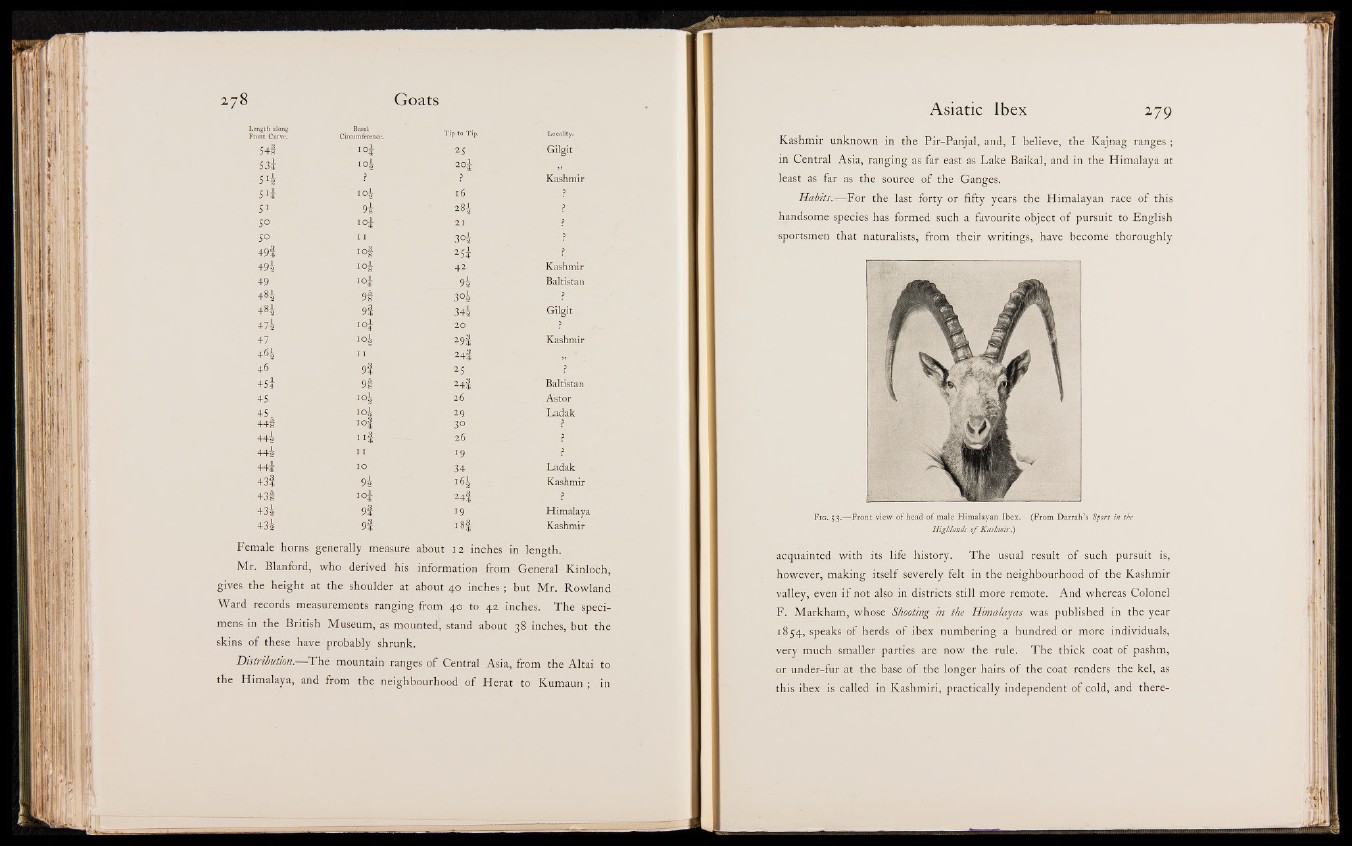
2 7 8 G o a t s
Length along Basal
Front Curve. Circumference. rip to Tip. Locality.
54§ - io i 25 Gilgit '
53è I0i 20J „
5 4 ? Kashmir
5 4 I02 16 ?
51 9* 284 ?
5° ’ i ° i 21 ?
ÿ xm it /3°* ■ ?
49i I of 25 î ?
49i io l 4Ï Kashmir
49 IO* 9j Baltistan
4»è i 3° i ?
4«i 9| 34i Gilgit
47t i ° i 20 ?
47 IQè 29I Kashmir
46^ i l 24I
46 9f 2 5 , ?
45Î s i 24i Baltistan
45 i ° i 26 Astor
45 icA . 29 Ladak
44tl !0§ E H 1 1 1
444 S I P 26 ?
44* 11 w ?
44* . . 1.0 ' . 34 Ladak
43§ 9i l6i Kashmir
43f I0i 24Ï
43* 9Î 19 Himalaya
43* 9| Kashmir
Female horns generally measure about 12 inches in length.
Mr. Blanford, who derived his information from General Kinloch,
gives the height at the shoulder at about 40 inches ; but Mr. Rowland
Ward records measurements ranging from 40 to 42 inches. The specimens
in the British Museum, as mounted, stand about 38 inches, but the
skins of these have probably shrunk.
Distribution.—§|rhe mountain ranges of Central Asia, from the Altai t0
the Himalaya, and from the neighbourhood of Herat to Kumaun ; in
A s i a t i c I b e x 2- 7 9
Kashmir unknown in the Pir-Panjal, and, I believe, the Kajnag ranges ;
in Central Asia, ranging as far east as Lake Baikal, and in the Himalaya at
least as far the source of the Ganges.
Habits.—For the last forty or fifty years the Himalayan race of this
handsome species has formed such a favourite object of pursuit to English
sportsmen that naturalists, from their writings, have become thoroughly
F ig . 53.—Front View of head of male Himalayan Ibex. (From Darrah’s Sport in the
Highlands o f Kashmir.%
•acquainted with iff life history. The usual result sjjj|,|uch pursuit is,
however, making itself severely felt in th^leighbourhood o f the Kashmir
valley, even i f not also in districts still more remote. And whereas Colonel
F. Markham, whose Shooting in the Himalayas was published in the year
1854, speaks of herds of ibex numbering a hundred or more individuals,
very much smaller parties are now the rule. The thick coat of pashm,
or under-fur at the base of the longer hairs of the coat renders the kel, as
this ibex is called in Kashmiri, practically independent of cold, and there